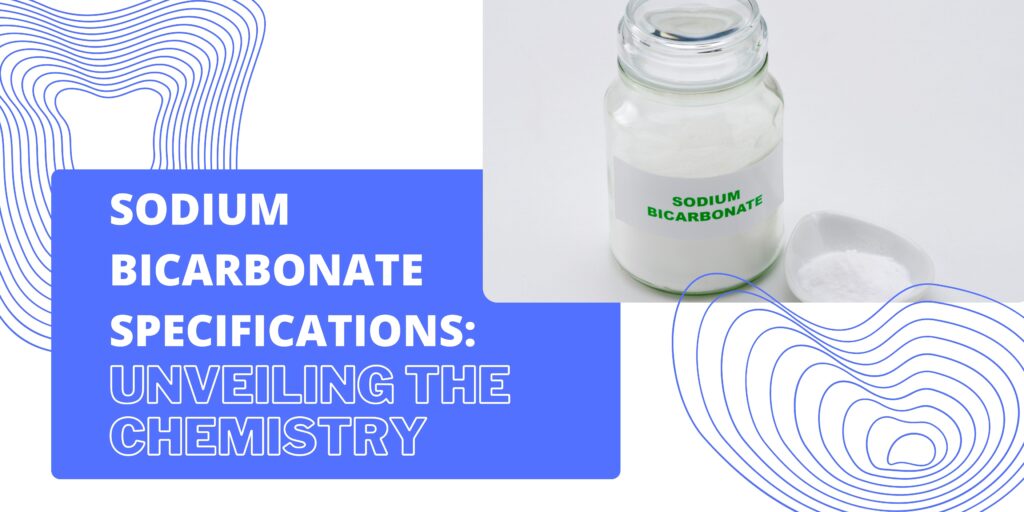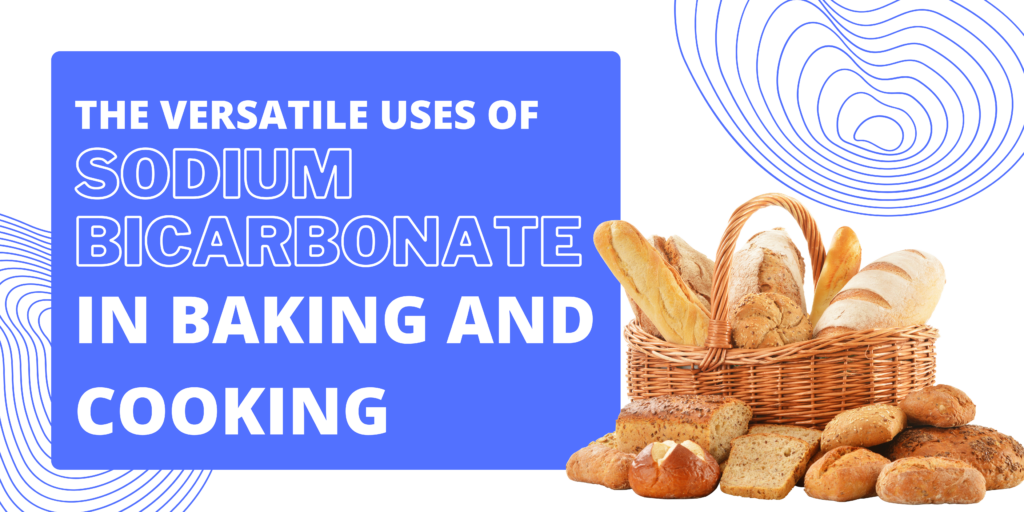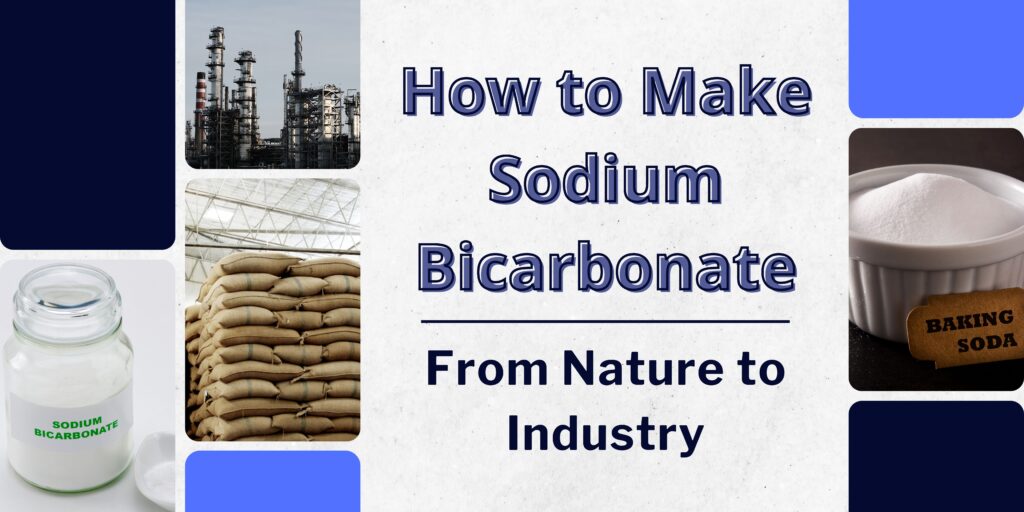
Known as baking soda, sodium bicarbonate is a versatile compound used in both culinary and industrial applications. Its chemical structure, NaHCO₃, comprises sodium, hydrogen, carbon, and oxygen atoms. This article delves into its chemical composition, exploring its uses and the stringent quality controls in its production.
Chemical Composition and Structure
At its core, sodium bicarbonate’s chemical formula, NaHCO₃, encompasses sodium, a reactive alkali metal, hydrogen, a diatomic non-metal gas, carbon, a versatile non-metal, and oxygen, a vital life-supporting element. The result is a white crystalline powder with no odor, non-toxic properties, and a slightly alkaline taste.
The structural arrangement of sodium bicarbonate reveals its significance in various chemical reactions. The bicarbonate ion (HCO₃⁻) is a key player, especially in buffering systems, where it helps maintain a stable pH. Understanding this chemical structure is crucial for appreciating the compound’s myriad applications.
Production Methods
Sodium bicarbonate can be produced through different methods, with two primary approaches standing out: the Solvay process and the Nahcolite process.
Solvay Process
The Solvay process, developed by Belgian chemist Ernest Solvay in the 1860s, involves the reaction between sodium chloride (NaCl), ammonia (NH₃), carbon dioxide (CO₂), and water.
The resulting sodium bicarbonate precipitates out of the solution and is then separated, washed, and dried to obtain the final product.
Nahcolite Process
The Nahcolite process involves the extraction of sodium bicarbonate from naturally occurring mineral deposits of trona or nahcolite. The mined ore is crushed, and sodium bicarbonate is extracted through a series of chemical processes, followed by purification and drying.
Both methods are effective, and the choice between them often depends on factors such as cost, availability of raw materials, and the desired end product’s specifications.
Quality Standards and Specifications
The production and use of sodium bicarbonate are governed by strict quality standards to ensure its safety, efficacy, and consistency. Several key specifications are considered in the manufacturing and testing processes:
Purity
Sodium bicarbonate must meet high purity standards. Impurities, such as heavy metals, can have adverse health effects and can impact the compound’s performance in various applications.
Particle Size and Distribution
The particle size of sodium bicarbonate is a critical factor in its performance, particularly in applications like baking. Fine particles contribute to smoother textures in baked goods, while larger particles may affect the leavening process.
Moisture Content
The moisture content of sodium bicarbonate affects its stability and flow characteristics. Excess moisture can lead to clumping and reduce the product’s shelf life.
Alkalinity
The alkalinity of sodium bicarbonate is crucial, especially in applications where it is used to control pH. Manufacturers must carefully control the amount of sodium bicarbonate to ensure consistency in its alkalizing effects.
Arsenic Content
Arsenic is a regulated impurity, and its levels in sodium bicarbonate are closely monitored due to its toxicity. Strict limits are set to ensure product safety.
See our product specifications for different grades and origins by downloading our Sodium Bicarbonate TDS.
Properties of Sodium Bicarbonate
Sodium bicarbonate possesses a range of physical and chemical properties that contribute to its diverse applications. Understanding these properties is crucial for utilizing the compound effectively.
Solubility
Sodium bicarbonate is soluble in water, which makes it easy to incorporate into various liquid-based recipes. However, its solubility decreases as temperature decreases, so it may not dissolve as readily in cold solutions.
pH Regulation
The bicarbonate ion (HCO₃⁻) in sodium bicarbonate is an excellent buffer, meaning it can help regulate pH levels. This property is particularly useful in applications where maintaining a specific pH is crucial, such as in the production of pharmaceuticals or certain food products.
Heat-Induced Reactions
When exposed to heat, sodium bicarbonate undergoes decomposition, releasing carbon dioxide gas. This property is harnessed in baking to leaven dough and create a light, fluffy texture in baked goods.
Abrasive Nature
In its dry, powdered form, sodium bicarbonate exhibits abrasive properties. This characteristic makes it useful for various cleaning applications, where it can act as a mild scouring agent without causing damage.
Mild Alkalinity
Sodium bicarbonate has a slightly alkaline taste and a mild alkalizing effect. This property is utilized in food applications to counteract acidity and enhance flavor.
Color and Odor
Sodium bicarbonate is typically a white, odorless powder. Its lack of color and neutral scent contribute to its versatility in various applications, as it does not impart unwanted characteristics to the substances it interacts with.
Shelf Life of Sodium Bicarbonate
Understanding the shelf life of sodium bicarbonate is essential for both consumers and industrial users. The stability of this compound is influenced by factors such as exposure to moisture, temperature, and packaging.
Packaging
Sodium bicarbonate is hygroscopic, meaning it readily absorbs moisture from the environment. To prolong its shelf life, manufacturers package it in moisture-resistant containers, often with airtight seals. This prevents clumping and ensures the product’s integrity over time.
Storage Conditions
Proper storage conditions are critical. Sodium bicarbonate should be stored in a cool, dry place away from direct sunlight. Exposure to heat and humidity can accelerate chemical reactions, potentially affecting its quality and performance.
Indicators of Degradation
The appearance and texture of sodium bicarbonate can provide clues about its quality. Clumping or hardening may indicate moisture absorption, while discoloration could suggest the presence of impurities. Checking for these indicators regularly can help users assess the shelf life of their sodium bicarbonate.
Recommended Shelf Life
While sodium bicarbonate does not spoil or become harmful over time, its effectiveness in certain applications may diminish. As a general guideline, most manufacturers recommend using sodium bicarbonate within two years of the production date for optimal performance.
Applications in the Culinary World
Sodium bicarbonate’s culinary applications are diverse, making it a staple in kitchens worldwide.
Leavening Agent
Perhaps its most well-known use is as a leavening agent in baking. When sodium bicarbonate reacts with an acid (such as vinegar or cream of tartar) and is exposed to heat, carbon dioxide is released, causing the dough or batter to rise.
Neutralizing Agent
Sodium bicarbonate is an effective neutralizer of acids, making it a handy ingredient for balancing the pH levels in recipes. It is often used to reduce the acidity of tomatoes in pasta sauces or to counteract the sourness in certain dishes.
Tenderizer
In meat preparation, sodium bicarbonate can be employed as a tenderizing agent. It helps break down proteins, resulting in more tender and palatable meat dishes.
Industrial Applications
Beyond the kitchen, sodium bicarbonate finds its way into various industrial processes, showcasing its versatility.
Fire Extinguisher Agent
Sodium bicarbonate is a key component in certain types of fire extinguishers. When released, it reacts with the fire’s combustion byproducts, releasing carbon dioxide and suppressing the flames.
Waste Treatment
In wastewater treatment, sodium bicarbonate is used to adjust the pH of acidic effluents. This aids in the removal of pollutants and promotes the efficient functioning of treatment processes.
Flue Gas Desulfurization
Power plants often use sodium bicarbonate in flue gas desulfurization processes to reduce sulfur dioxide emissions. The alkaline nature of sodium bicarbonate reacts with acidic gases, forming stable compounds that can be easily removed.
Environmental and Health Considerations
While sodium bicarbonate is generally recognized as safe for consumption and use, it’s essential to consider environmental and health aspects:
Environmental Impact
The Solvay process, despite its efficiency, generates ammonia as a byproduct, contributing to environmental concerns. Manufacturers are increasingly exploring sustainable production methods to minimize ecological impacts.
Health Implications
High sodium intake is associated with health issues such as hypertension. As sodium bicarbonate contains sodium, its consumption should be moderated, especially by individuals on sodium-restricted diets.
Conclusion
Sodium bicarbonate, with its simple chemical composition and versatile properties, plays an integral role in both household kitchens and industrial settings. From leavening dough to neutralizing industrial waste, its applications are diverse and continually expanding. Comprehending the specifications and quality benchmarks linked to sodium bicarbonate is vital to guarantee its secure and efficient utilization across diverse sectors. With the progression of technology and an increasing environmental consciousness, the manufacturing and utilization of sodium bicarbonate are poised to undergo transformation, leading towards a future that prioritizes sustainability and health.




